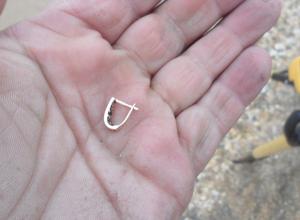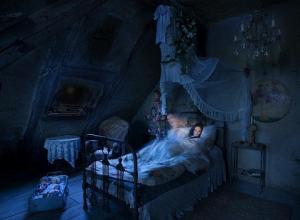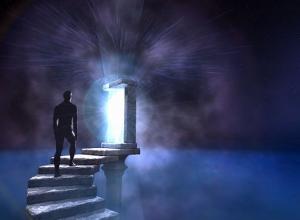Presentation on the topic of the Eastern European Russian Plain. Presentation on geography on the topic "East European (Russian) Plain." What landforms are located on the plain?
“West Siberian Plain” - The length of the Irtysh on Kazakhstan territory is 1400 km. A lot of minerals are found in the West Siberian Plain. The location of the ridge is from west to east. A mining and processing plant operates in the city of Rudny. In winter the river freezes. The climate of the West Siberian Plain is continental and quite harsh.
“Soils of Russia” - Soil types. Soil-forming factors. V.V. Dokuchaev. 1. 2. 3. 4. Lesson topic: Soils of Russia. Alternation of soils on the territory of Russia when moving from north to south. Soil profile. Soil characteristics according to plan.
“Russian Plain” - Why don’t trees grow in the tundra? Average temperature, July: +37, January: -4; -16. Precipitation amount 750mm. Why is the tundra strip on the Russian Plain narrow? What impact has human intervention had on the nature of forest-steppes and steppes? Noticeable differences are in January temperature and annual precipitation.
“Natural zones of the cold zone” - Tundra zone. Steppes. Temperate forests. Taiga mixed broadleaf forests. Taiga. Deserts. Mixed and broad-leaved forests. Natural zones of the cold zone. Tundra ecosystem. Semi-desert steppes. Arid temperate zones. Natural areas of the earth. Power circuits. In the direction from the pole to the equator, natural zones replace each other in a certain order. cold moderate hot moderate cold.





Features of the geographical location: The East European Plain is one of the largest plains on our planet (the second largest after the Amazon Plain in Western America). It is located in the eastern part of Europe. Since most of it is located within the borders of the Russian Federation, the East European Plain is sometimes called the Russian Plain. In the northwestern part it is limited by the mountains of Scandinavia, in the southwestern part by the Sudetes and other mountains of central Europe, in the southeastern part by the Caucasus, and in the east by the Urals. From the north, the Russian Plain is washed by the waters of the White and Barents Seas, and from the south by the Black, Azov and Caspian Seas. The length of the plain from north to south is more than 2.5 thousand kilometers, and from west to east - 1 thousand kilometers. The majority of Russia's population and most of the country's large cities are concentrated within the territory of the East European Plain. It was here that the Russian state was formed many centuries ago, which later became the largest country in the world by its territory. A significant part of Russia's natural resources is also concentrated here.


Factors that influenced the formation of the relief: The East European Plain almost completely coincides with the East European Platform. Small hilly areas arose as a result of faults and other complex tectonic processes. The height of some hills and plateaus reaches meters. The Baltic shield of the East European Platform was at the center of glaciation. On the territory of the Russian Plain, platform deposits lie almost horizontally. Where the folded foundation protrudes to the surface, hills and ridges are formed (for example, the Central Russian Upland and the Timan Ridge). On average, the height of the Russian Plain is about 170 meters above sea level. The lowest areas are on the Caspian coast (its level is approximately 30 meters below the level of the World Ocean). Glaciation left its mark on the formation of the relief of the East European Plain.


Do you want to become better at computer skills?
Autosaving Excel files while working with the program is a very convenient function that allows you to restore files that were interrupted in an emergency: the power was turned off, a program error occurred, or for some other reason, when you worked with the file for a long time, and save it in the usual way did not have time. For this case, Microsoft office suite programs have autosave, when the program itself saves changes to a file every few minutes. How to make automatic saving on your PC?
Read new articles
The lesson can be fruitful and joyful, in one breath, or it can drag on sluggishly and boringly, exhausting the children and the teacher and bringing no satisfaction to anyone. And the reason for this is not only methodological errors, characteristics of the material and class. Perhaps, to an even greater extent, the reason should be sought in the emotional background of the lesson, which turned out to be unfavorable. Creating an emotional background is a task that inevitably faces any teacher and requires his attention and effort. How to create a positive lesson background?
How to capture the attention of a student in the age of digital technology, when the flow of information completely absorbs a person? Many people are probably familiar with the situation when a lesson is going on, and the students look at the phone screen and don’t want to do anything else. How to capture students' attention and make the lesson interesting? Let's look at several techniques for creating interest in the lesson.
To use presentation previews, create a Google account and log in to it: https://accounts.google.com
Slide captions:
Lesson Topic: Russian (East European) Plain. Lesson author: Bayyr-ool A.K. Place of work: MBOU Secondary School named after. N.S. Kongara s. Bai-Tal. Position: teacher of geography and biology
Lesson objectives: 1.Create an image of the Russian Plain, the largest physical and geographical country in Russia; show its uniqueness, specificity, provide a geographical perception of it through the emotional sphere using works of fine art, poetry, and songs of Russian poets and composers. 2.Develop speech activity, the ability to independently obtain knowledge from various sources of information. 3. To foster patriotism, a sense of beauty, and love of nature.
Equipment: physical map of Russia, photographs of houses in the city of Gorodets, slides, student reports. multimedia projector, table on the board. Note: students were given advanced tasks: 1) prepare a report on the topic “Handicrafts of the inhabitants of Central Russia” 2) memorize poems about the Russian Plain and the Volga River.
Each physical-geographical country or region is unique and inimitable. In this lesson we will study the features of the nature and population of the Russian Plain. The science of geography is closely connected with both literature and painting. Nature was described not only by scientists, but also by poets, writers and artists. And I would like to create not only a scientific, but also an artistic image of the nature and population of the Russian Plain.
The Russian Plain is the land where the Russian state was born. Among the forests, the fortress walls of rare and small cities once rose here. Years passed. Conquerors invaded the Russian Plain. The Russian Plain has seen a lot. Many writers turned to her, many artists depicted her beauty on canvas, and poets dedicated lines to her
Climate features: There is a lot of precipitation (the western transport of Atlantic air masses has a great influence). Due to the warm Atlantic air masses, winters here are mild and summers are warm. The abundance of precipitation in the north-west of the plain contributes to the widespread occurrence of swamps and full-flowing rivers and lakes. The climate is very diverse. From north to south, climate zones change from the tundra to deserts in the south. In general, the climate here is favorable.
The Volga is one of the main riches and decorations of the Russian Plain. Starting from a small swamp on the Valdai Hills, the river carries its waters into the Caspian Sea. It has collected the waters of hundreds of rivers and streams flowing from the Ural Mountains and emerging on the plain. The main sources of nutrition for the Volga are snow (60%) and groundwater (30%). In winter the river freezes.
The poet Nikolai Palkin in his poem “About the Volga” devotes the following lines to the great Russian river. It’s from here, it’s from here that from the depths of the river spring flows a blue miracle - a Russian lowland river, a bright house like a girl’s light, a warm evening, a gloomy spruce. Stop, people! The Volga was born here! This is her home and her cradle!
Filling out tables in notebooks. Russian Plain: relief climate rivers lakes
Population. 80% of the country's population lives on the Russian Plain. The Russian Plain is the main arena where the events of Russian history took place, where statehood took shape and the Russian nation was formed. The largest cities in Russia, Moscow and St. Petersburg, are located on the Russian Plain.
Folk crafts. The Russian Plain is rich in forests. This predetermined the dominant role of wood as a building material, easily processed and easily accessible. Khokhloma painting - In the old days, among the wooden utensils that filled the house, Khokhloma products were especially loved. This is still the case. Khokhloma craft - painting wooden utensils and furniture - is one of the most famous in Russia. The greatest wealth of a peasant family in Rus' was a solid, beautifully carved house. Pine was used to build the house. Perhaps nowhere in Russia were peasant huts decorated so richly with carvings as in the Nizhny Novgorod Trans-Volga region. Each such house was distinguished by its individuality and is a work of art. Student's report about handicrafts of the inhabitants of Central Russia.
Beauty of Nature: Nature enchants with its beauty. It gives a person spiritual and physical strength, calms, and restores health. The unique charm of nature of the mighty Volga River is sung by Lyudmila Zykina, People's Artist of Russia.
Song "The Volga River Flows".
Conclusion: The Russian Plain is the largest physical and geographical country in Russia. The Russian plain is the soul, the heart of Russia.
THANK YOU FOR YOUR ATTENTION!
geography teacher
MBOU secondary school No. 30,
Ozyorsk, Chelyabinsk region
BULYCHEVA G.I.
GEOGRAPHY OF RUSSIA


- -The first PTK is the Russian Plain or East European
- -Where do you think the plain got its name?
- (Because here was the center of Russia, most Russians live here, Ancient Rus' was located on the plain)
- -Why Eastern European?
- (The plain is located in eastern Europe)


- Listen to student messages.
- Ancient cities.
- Cultural heritage


- 2.Relief and geological structure.
- 3.Climate.
- 4.Waters (rivers, lakes, swamps, permafrost)
- 5.PC area.
- 6.PR and problems of their use.

- -Define the boundaries of the Russian Plain on a physical and political-administrative map.
- The Russian Plain is located in western Russia:
- from the state border in the west to the Ural Mountains in the east.
- In the north, the plain is washed by the Barents and White Seas, in the south by the Black and Azov Seas to the Caucasus Mountains.

- From north to south the plain extends for 2500 km. From west to east for 1000 km.
- In the north, the plain is crossed by the Arctic Circle. This territory is closest to the Atlantic Ocean.
- Knowing that the plain is located in temperate latitudes, we can conclude about the influence of the Atlantic Ocean on the nature of the plain.


- -Using a tectonic map, determine in which part of the earth’s crust there is a plain.
- (On the ancient Russian platform).
- -Let’s remember what an ancient platform is? What is its structure?
- An ancient platform is a stable, rigid section of the earth's crust with a Precambrian foundation composed of ancient igneous crystalline rocks.


- From above, the foundation is covered with a sedimentary cover of varying thickness. The areas of the platform where the foundation reaches the surface are called shields.
- -Find the shields on the Russian platform on the map.
- ( Baikal shield)

- -Does the tectonic structure affect the nature of the Russian Plain?
- (Yes. It does. The tectonic structure determined the flatness of the territory. The unevenness of the foundation determines the placement of large hills and lowlands)
- The uplift of the foundation (Voronezh) led to the appearance of the Central Russian Upland on this part of the platform. The Caspian and Pechora lowlands correspond to the basement depressions.

- -Find these landforms. What other highs and lows are there on the plain?
- Timansky Ridge,
- Oka-Don Plain,
- Volga Upland,
- Northern Uvaly,
- Valdai Hills,
- Smolensk - Moscow Upland.



- -Which lowland has the lowest absolute height?
- (Caspian -28m, i.e. 28 meters below the level of the World Ocean)
- - Which mountains are the highest?
- (Khibiny Mountains on the Kola Peninsula on the shield)

- - The relief of the plain is varied. Why?
- (Its formation was influenced by external and internal processes over millions of years).
- -What external processes shaped the relief of the plain?
- (The glacier had a destructive effect during the Quaternary period).

- Working with the text of the textbook p. 146 from the 3rd paragraph to the end.
- -Human activity has led to the formation of ravines.
- -Draw a conclusion about the topography of the plain.


Russian Plain
Tectonics and relief
Population, handicrafts
Poets, writers, artists
Diversity of nature

- FIXING
- The largest plain in the world.
- Ancient plain.
- Diversity of relief (highlands and lowlands).
- The lowest point in Russia is the Caspian Lowland - 28 m.
- In the north, the landscape features alpine features in the absence of mountains - rocks, stone ruins (associated with glacier activity).
- There are canyons and waterfalls! (in Sablino).
- There are earthquakes in the south!

- 1 . In terms of area, the Russian Plain occupies ... place after ... lowland in the world.
- 2. The length of the plain from north to south is ... km, and from west to east ... km.
- 3. The flatness of the relief is due to the presence of... at the base.
- 4. The most ancient and glorious cities of Russia are located on the Russian Plain....
- 5. On the Kola Peninsula and Karelia, the foundation comes to the surface, in the form
- 6. Elevations are associated with the foundation uplifts... .

- 7. As the glacier retreated, huge lakes formed...
- 8. The main part of the plain is located in ... climate zone.
- 9. The hills are especially strongly dissected by ravines and gullies: ... .
- 10. The plain is influenced by ... coming from the Atlantic and receives a lot of precipitation.
- 11. Large rivers are: ….
- 12. A characteristic feature of the nature of the plain is... zoning.
Latest site materials
Psychology

Why does a woman dream about meat: raw, without blood, fresh, boiled, fried
Why do you dream of eating raw meat? You need to look into the dream book, it will give an accurate description of such a dream. This could be mental anxiety, an upcoming illness, or great luck. Remember the details of the dream. They are key to the interpretation of sleep. See
Family

Why do you dream about a lot of chickens?
A small chick is a protective magical symbol, so you need to find out why a particular dreamer dreams of chickens. Often, a bird seen in a dream represents some kind of beacon that helps to correctly and timely assess the surrounding situation.
Development up to a year

“Dream Interpretation of Earrings dreamed of why Earrings are seen in a dream
Earrings are a paired symbol. Why do you dream about earrings? What you see promises good news, an offer regarding a new job or a profitable marriage. What events await the dreamer if he found, lost or bought jewelry - a detailed description in our article. Good to know
Diseases

Interpretation of the dream garage in dream books Dreaming of looking for a place for a garage
Modern family dream book according to Freud: A dream about a garage is a sign of profit, good news Detailed universal dream book: A garage with a white gate - everything will be great. And even though a stream of minor troubles will fall on you in the coming days, you will honor
Pregnancy and childbirth

Why do you dream about raw kebab?
All cat owners know very well how their furry pets while away the days: they take a nap, eat, take a nap again, eat and go back to sleep. Yes, one can only envy such a pleasant pastime and instant falling asleep. Why do cats sleep so much and
Child nutrition

Kawaii chan. What is "kawaii"? Meaning of the word. Perception in Japan
Before increasing your own Kawaii quality, you should figure out what kind of Kawaii this is. He came to us from “neighboring” Japan and is already beginning to cling tightly. Bourgeois magazines write that his homeland is Shibuya, the central district of Tokyo, the Mecca of Japan
